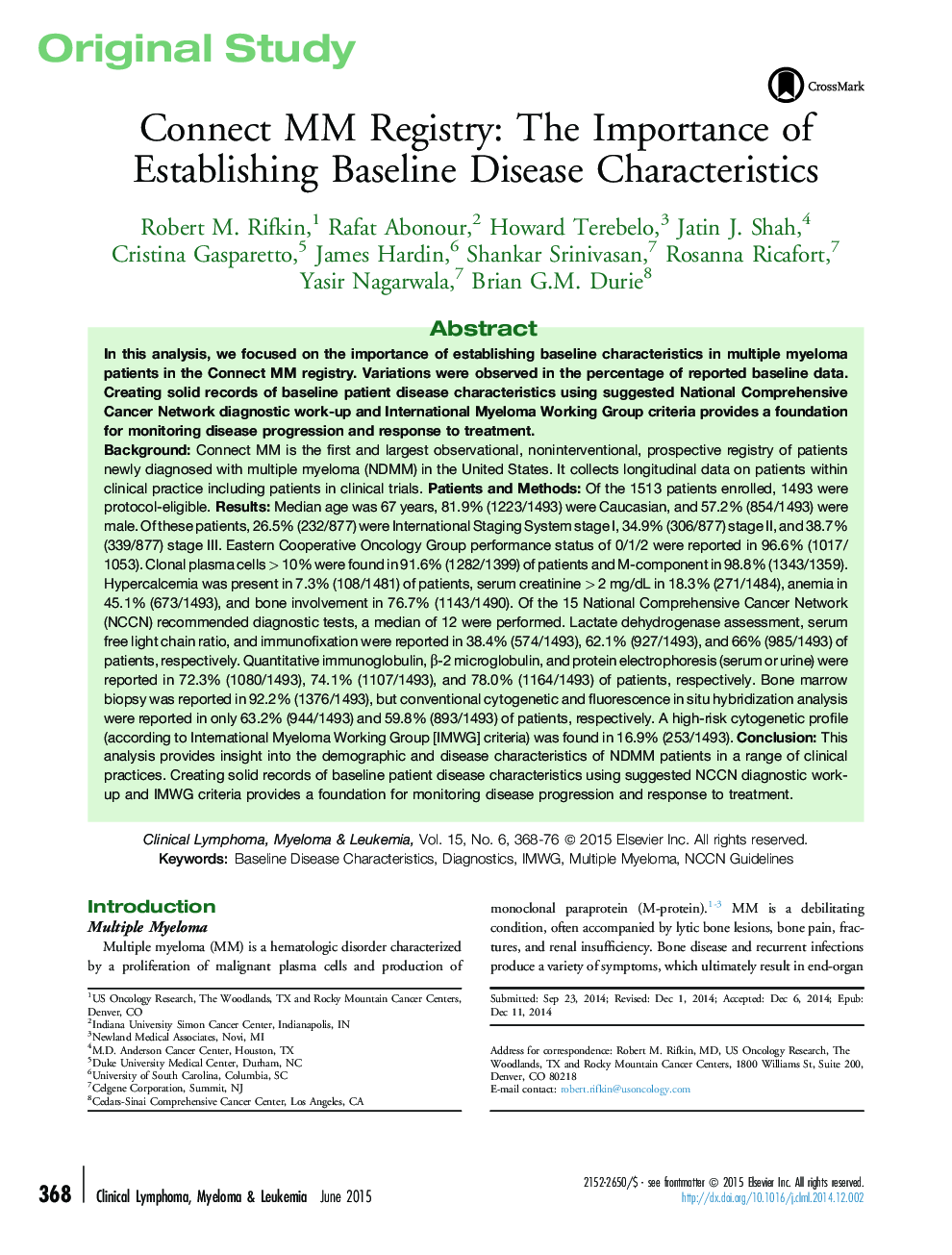| Article ID | Journal | Published Year | Pages | File Type |
|---|---|---|---|---|
| 2754243 | Clinical Lymphoma Myeloma and Leukemia | 2015 | 9 Pages |
BackgroundConnect MM is the first and largest observational, noninterventional, prospective registry of patients newly diagnosed with multiple myeloma (NDMM) in the United States. It collects longitudinal data on patients within clinical practice including patients in clinical trials.Patients and MethodsOf the 1513 patients enrolled, 1493 were protocol-eligible.ResultsMedian age was 67 years, 81.9% (1223/1493) were Caucasian, and 57.2% (854/1493) were male. Of these patients, 26.5% (232/877) were International Staging System stage I, 34.9% (306/877) stage II, and 38.7% (339/877) stage III. Eastern Cooperative Oncology Group performance status of 0/1/2 were reported in 96.6% (1017/1053). Clonal plasma cells > 10% were found in 91.6% (1282/1399) of patients and M-component in 98.8% (1343/1359). Hypercalcemia was present in 7.3% (108/1481) of patients, serum creatinine > 2 mg/dL in 18.3% (271/1484), anemia in 45.1% (673/1493), and bone involvement in 76.7% (1143/1490). Of the 15 National Comprehensive Cancer Network (NCCN) recommended diagnostic tests, a median of 12 were performed. Lactate dehydrogenase assessment, serum free light chain ratio, and immunofixation were reported in 38.4% (574/1493), 62.1% (927/1493), and 66% (985/1493) of patients, respectively. Quantitative immunoglobulin, β-2 microglobulin, and protein electrophoresis (serum or urine) were reported in 72.3% (1080/1493), 74.1% (1107/1493), and 78.0% (1164/1493) of patients, respectively. Bone marrow biopsy was reported in 92.2% (1376/1493), but conventional cytogenetic and fluorescence in situ hybridization analysis were reported in only 63.2% (944/1493) and 59.8% (893/1493) of patients, respectively. A high-risk cytogenetic profile (according to International Myeloma Working Group [IMWG] criteria) was found in 16.9% (253/1493).ConclusionThis analysis provides insight into the demographic and disease characteristics of NDMM patients in a range of clinical practices. Creating solid records of baseline patient disease characteristics using suggested NCCN diagnostic work-up and IMWG criteria provides a foundation for monitoring disease progression and response to treatment.
